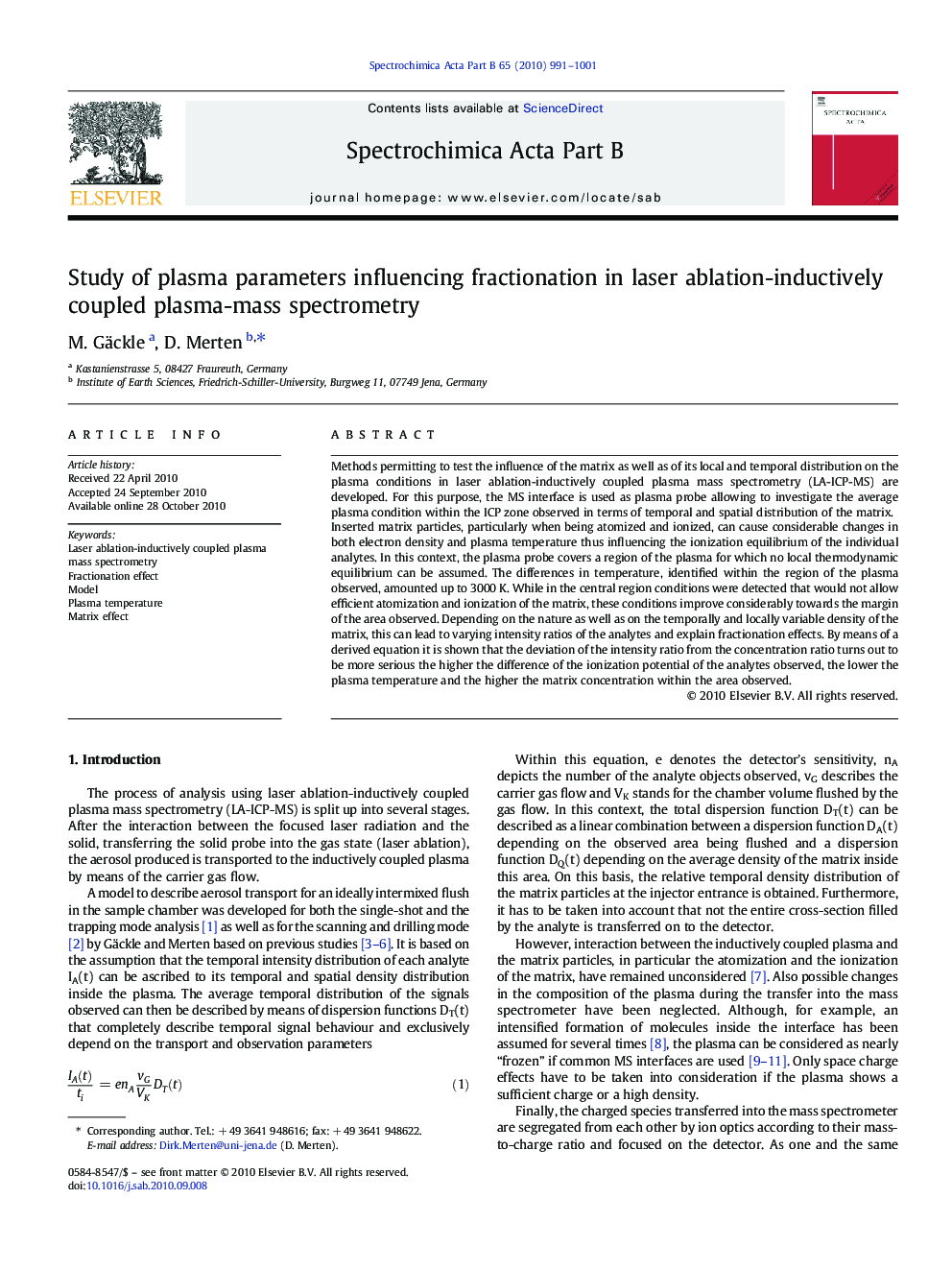| Article ID | Journal | Published Year | Pages | File Type |
|---|---|---|---|---|
| 1240244 | Spectrochimica Acta Part B: Atomic Spectroscopy | 2010 | 11 Pages |
Methods permitting to test the influence of the matrix as well as of its local and temporal distribution on the plasma conditions in laser ablation-inductively coupled plasma mass spectrometry (LA-ICP-MS) are developed. For this purpose, the MS interface is used as plasma probe allowing to investigate the average plasma condition within the ICP zone observed in terms of temporal and spatial distribution of the matrix.Inserted matrix particles, particularly when being atomized and ionized, can cause considerable changes in both electron density and plasma temperature thus influencing the ionization equilibrium of the individual analytes. In this context, the plasma probe covers a region of the plasma for which no local thermodynamic equilibrium can be assumed. The differences in temperature, identified within the region of the plasma observed, amounted up to 3000 K. While in the central region conditions were detected that would not allow efficient atomization and ionization of the matrix, these conditions improve considerably towards the margin of the area observed. Depending on the nature as well as on the temporally and locally variable density of the matrix, this can lead to varying intensity ratios of the analytes and explain fractionation effects. By means of a derived equation it is shown that the deviation of the intensity ratio from the concentration ratio turns out to be more serious the higher the difference of the ionization potential of the analytes observed, the lower the plasma temperature and the higher the matrix concentration within the area observed.
